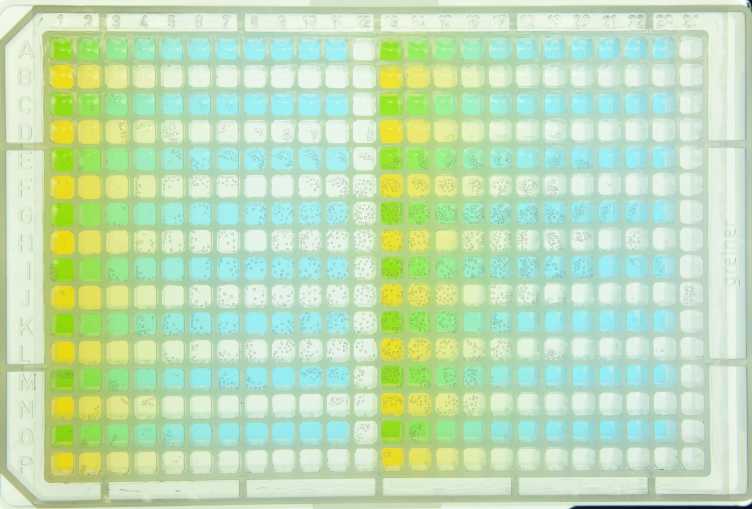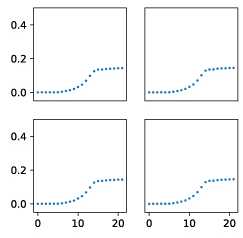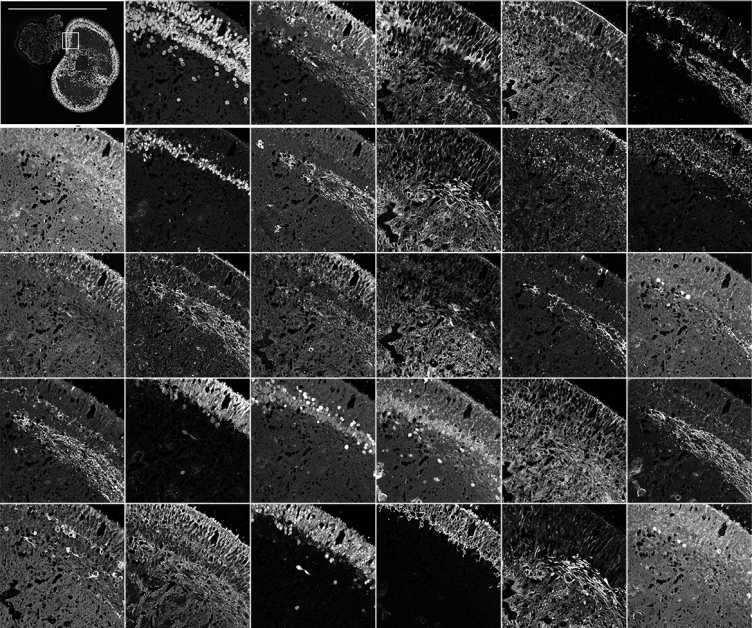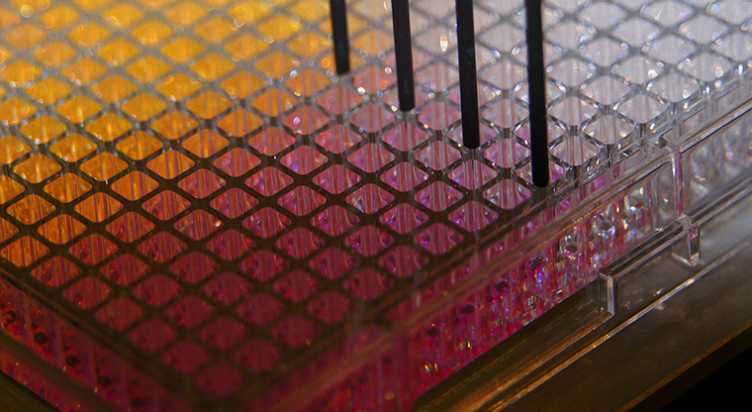Standard assays
Dose-response pipetting

We offer several methods to produce dilution curves of compounds in a range of different 96-well and 384-well plates on the Hamilton robotic system H2. Two-fold serial dilution curves of up to 96 compounds can be prepared in one run. Each compound can be combined with an individual tester strain. Dilution curves span over a concentration range of 1:512 and include a positive control (no compound) and a contamination control (no compound, no cells). Optionally, plates can be prepared in duplicate or be sealed with foil to prevent evaporation and cross-contamination during downstream processes.
Monitoring microbial growth

On the Tecan robotic system T1 we can monitor growth of microbial cultures in up to eight microplates in parallel. The cultures are incubated under well-controlled conditions (temperature, humidity, shaking) on the integrated Kuhner Shaker ES-X platform equipped with a custom-build incubator box. Growth is measured as optical density or fluorescence signal using the filter-based Tecan F200 microplate reader. A variety of 96-well and 384-well plates can be used. The resulting data can be analyzed at run-time. This method is regularly used downstream of our "Dose-response pipetting" method.
Iterative indirect immunofluorescence imaging (4i)

On our Hamilton liquid handler H1 we have implemented the so called "4i" immunostaining method for staining of tissue sections or fixed cultures. The methods is based on the procotol published by external page Gut et. al 2018. Through use of our tilting module, which allows to remove >95% of the buffer in each well, we could reduce the number of wash steps. Different 96-well imaging plate types can be used.
Secreted alkaline phosphatase (SEAP) assay

This method performes SEAP assays on samples provided in up to 24 x 96-well plates, to determine promoter activity in cell culture supernatant. It inactivates, dilutes, and determines activity of the samples. This assay has been established on robotic system H2.
Enzyme-linked immunosorbent assay (ELISA)
Automated ELISA is implemented on the Hamilton liquid handler H3. The method includes coating of plates with antibodies, as well as all incubation and wash steps. Up to three 96-well plates can be processed in parallel.